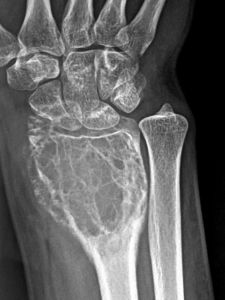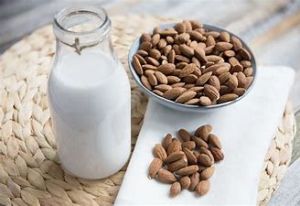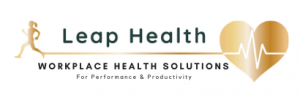Is milk good or bad, and how can I support my bone health?” is a question you may ask, when you see mixed information and opinions plastered everywhere.
Who remember s the advert with two young boys, with one of them drinking milk and exclaiming that he will be able to play for Accrington Stanley one day, to which his friend replies “Accrington Stanley…who are they?”

But, the question we want to explore is “Will milk help or hinder your bone health, and is it a key component to a healthy diet?” Below you will find some important considerations, which should provide a balanced approach for you to make an individual decision to make small steps to leap your health.
The role of calcium
Calcium is needed to strengthen our bones and teeth. It also involved in regulating muscle contractions including the heart and it helps our blood to clot.
Osteoblasts and osteoclasts are the two key players in bone formation and bone loss. Osteoblasts are found in the bone marrow and are important for bone formation. I always remember this with the “B” for blasts, being a “B” for building.
Osteoclasts degrade bone and mediate bone loss. Up until our mid-twenties the osteoblast activity is greater than the osteoblasts, but slowly after this age the balance switches, meaning a slow bone loss. If we do not have enough calcium in our blood, this is pulled from our bones, which means thinning of the bones and a higher risk for osteoporosis.
For as long as we can remember, when we think of calcium, milk is the main source that comes to mind. Admittedly it is a great source and a 200ml glass provides approximately a third of our daily recommended amount. However there are also many other sources such as other dairy products, leafy greens, sardines or other fish that you eat the bones. The RDA for most people age 19 and over is 700mg per day. There are exceptions though and this includes younger children, teenagers, women going through the menopause, and those breast feeding.
The role of Phosphorus
Phosphorus and calcium go hand in hand, a bit like fish and chips! Phosphorus works closely with calcium to build strong bones and teeth. These two minerals combine to form calcium phosphate. 
Vitamin D
Vitamin D and calcium go hand in hand, a bit like a pen and paper! Vitamin D plays the role of absorbing the calcium into a useable form. Often this is over looked, and people focus on the calcium in isolation. During March- September we can get sufficient Vitamin D from sunlight, but it is recommended by the NHS that between Sept and March we consider supplementing with 10 micrograms. The amount of sunlight you would need is dependent upon your skin type. So on average this would be 20-30 minutes per day, but darker skins would need longer. Good food sources of Vitamin D include oily fish, such as salmon, sardines and mackerel, egg yolks, & fortified foods such as breakfast cereals. It is useful to note that in other countries milk routinely has vitamin D added, but this is not the case in the UK.
Children and teenagers
The NHS recommendations do not state an increase in the calcium recommendations to be increased in children, but the osteoporosis foundation recommend 1300mg for those aged 9-18, as it is such a critical time for bone formation. Failing to nourish kids adequately can cause long term complications. So, the advert that we alluded to earlier could have had a real positive impact on the bone formation of many youngsters in that era. I wonder if they have a study to show it? An area that I think we should pay more attention to is fuelling this age group according to their activity levels to ensure that they are getting the replenishment, that us as adults would pre or post a workout.
Menopause
During the perimenopause, menopause, and post menopause oestrogen levels drop. Oestrogen supports bone health by helping intestinal absorption of calcium. Having low oestrogen levels therefore negatively impacts your body’s efficiency to make use of the calcium you consume. It is partly this reason, why you are at more at risk for osteoporosis if you’re female.
To learn more about optimal nutrition pre, during and post menopause, please do get in touch to find out about specific workshops to empower you and/or those around you, to make small steps to leap health during this time- anna@leaphealth.co.uk.
Lactose
You will have heard the phrase before “lactose intolerant”, but do you fully understand what this means, or do you just assume it’s someone who does not drink dairy milk? Well, here is the science simply. Milk contains the enzyme “lactose”, and to break this down in the body you need an enzyme called “Lactase” which is found in the small intestine and produced by the intestinal epithelial cells, which have finger-like projections called microvilli that absorb nutrients from food so that they enter the bloodstream. If this is not present, the lactose passes to the large intestine, interacts with bacteria’s and produce fatty acids and gases like carbon dioxide, hydrogen and methane, which can cause the symptoms of bloating, stomach cramps and bad wind!
After about the age of 2, when breast or bottle feeding stops and we are having less milk, our levels of lactase deplete. In people with primary lactase deficiency, they inherit this in their genes. Secondary lactase deficiency can be due to a number of factors such as gastroenteritis, crohns disease, coeliac disease, ulcerative colitis, chemotherapy and high use of antibiotics which affect the gut bacteria. When I explain the gut bacteria to the kids, I use the story of our gut containing the good and bad soldiers. We talk about what can help the good soldiers to be able to fight off the bad soldiers. When we take antibiotics, they aid our recovery in killing off those bad soldiers, but in the process can wipe out the good soldiers too, which leaves us in a more vulnerable position to defend in the future.
Vegan milk
With the number of people becoming vegan rapidly increasing, sales of plant based milk alternatives is on the rise. When looking at the ingredients in most of these, it is very evident that the profit margin must be huge! The primary ingredient is water. An example of a well-known brand of almond milk contains 2.3% almonds, and oat milk contains just 8.7% oats. On a positive not these do contain added vitamins and calcium levels are similar to dairy milk. But, beware this is not the case with all, and not all have vitamins added. The take home message here is to be vigilant on the ingredients and do not assume that you are getting the equivalent nutrients as you would with dairy milk, so you may have to add this from other sources. This is a good option if you are intolerant of dairy milk, vegan or prefer the taste.
Exercise
One of the best ways to protect our bones is to MOVE! Resistance and impact training, such as weight lifting, bodyweight exercise, or running/jumping/hiking etc, supports bone formation by stimulating the activities of osteoblasts and osteocytes. This in turn reduces the risk of osteoporosis.
Take home message
- Milk is great, and might help you get to Accrington Stanley… but it`s not the only way and there are key things to consider.
- Do not just jump on the band wagon of avoiding it because it may seem the “trendy” thing to do at the moment.
- If you have a medical condition, seek the advice of your health care professional.
- Age 9-18 is critical for bone formation so support the intake of calcium, vitamin D and phosphorus in this group.
- Menopause, pre, and post, is also a key time to nourish with bone friendly nutrients.
- Try to focus on adding nutrients in your diet in a way that suits your personal body needs and tolerances.
- The are other food sources also that contain the nutrients we need such as calcium, phosphorus, and Vitamin D, and a varied, nutrient rich diet is a great choice!
Anna
For more information about workplace health workshop’s or 1:1 Nutrition coaching to improve physical & mental health, and drive personal & professional productivity
contact me at anna@leaphealth.co.uk.
Current workshops include
WFH…WFH-Working From Home…Without Forgetting Health – Leap Health
Food for Mood & Motivation – Leap Health
Exercise snacking for productivity hacking – Leap Health
Rest, Recovery, Recharge… – Leap Health
Fuel as a Productivity Tool – Leap Health
Perimenopause, menopause & post menopause nutrition to nourish and flourish. – Leap Health
Bespoke solutions include
A four part programme to empower the women in your workplace to flourish personally & professionally through the years
A customised build workshop for your workplace
Support building internal health champions
Initiatives and events to improve corporate health
Heart rate monitoring and stress testing
Connections to other health experts in the field
Or… other innovative, individualised solutions based on your organisation needs
Linkedin- Anna Reddy Leap Health
Instagram- leaphealth.co.uk
Website- www.leaphealth.co.uk
Email- anna@leaphealth.co.uk

